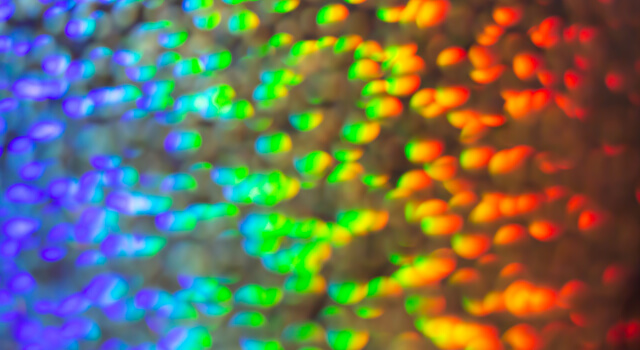Kaleidoscope vision is not a stand-alone condition, but rather a visual symptom of migraines or conditions like a brain injury or stroke. A person with kaleidoscope vision may perceive broken shapes and brilliantly colorful or scrambled images in their vision — much like looking through a kaleidoscope.
The condition can affect one or both eyes and can occur with or without a headache. Visual auras frequently precede headaches and migraines.
What Causes Kaleidoscope Vision?
An ocular migraine — a migraine with visual symptoms — is the most common cause of kaleidoscopic vision. Aura, also known as a sensory disturbance, is experienced by about 20% of migraine sufferers. Tingling in the hands or face, muscle weakness and trouble speaking are all examples of auras.
Visual Symptoms of a Migraine
Only one type of visual aura includes kaleidoscope vision. Understanding the different forms of visual disturbances that might occur as a result of a migraine can help.
There are three types of visual auras:
Positive Visual Aura
A person with a positive aura sees something that isn’t actually there. For example, they may perceive zig-zag or squiggly lines, flashes, stars or dots. Colorful shapes that move around the visual field or become larger may be perceived. A positive aura can also include a visual hallucination.
Negative Visual Aura
This is defined as any loss of vision, partial or entire, during a migraine. Blind spots, loss of peripheral vision or a brief period of total visual loss are all possible side effects of negative auras.
Altered Visual Aura
This aura alters your perception without adding or deleting anything. A straight line, for example, may appear wavy or fuzzy. A person with kaleidoscope vision is said to have an altered aura.
Misperceiving the size of an object (perceiving it to be larger or smaller than it is), distorted distance perception, and distorted or absent color are all examples of altered aura.
If you or a loved one is experiencing any type of ocular migraine, schedule an appointment with EYEcenter Optometric in Citrus Heights.
At EYEcenter Optometric, we put your family's needs first. Talk to us about how we can help you maintain healthy vision. Call us today: 916-727-6518 or book an appointment online to see one of our Citrus Heights eye doctors.
FOLLOW US:
Q&A
Q: How do you get rid of kaleidoscope vision?
- A: There is currently no cure for kaleidoscope vision, but like any other migraine symptom, usually goes away on its own after an hour or so. People can take medication to alleviate painful sensations and prevent migraine attacks from occurring.
Q: What does it mean when you see a kaleidoscope in your vision?
- A: Kaleidoscope vision is a temporary vision distortion that makes it appear as though you're seeing through a kaleidoscope. The images are strewn together and can be highly colorful or gleaming.The most common cause of kaleidoscopic vision is a type of migraine headache called a visual or ocular migraine. When nerve cells in the area of your brain responsible for vision start firing abnormally, you have a visual migraine. It usually lasts 10-30 minutes.
Quality Frames For Prescription Eyeglasses & Computer Glasses In Sacramento, California. Visit EYEcenter Optometric for an eye exam and eyeglasses that match your style.
The most common cause of kaleidoscopic vision is a type of migraine headache called a visual or ocular migraine. When nerve cells in the area of your brain responsible for vision start firing abnormally, you have a visual migraine. It usually lasts 10-30 minutes.
Script
A quarter of all people who get migraines experience visual disturbances.
Kaleidoscope vision is a short-term visual disturbance that causes visual images to look broken up, blurry and bright in color — much like a kaleidoscope. .
While it’s usually not a major cause for concern, kaleidoscopic vision can sometimes be a sign of something more serious.
It could be an early symptom of a stroke, brain injury or other neurological disorder.
If you’re experiencing visual disturbances, contact us today!

